In the realm of electric SUVs, the competition is heating up with the arrival of two notable models: the CUPRA Tavascan and the VW ID.4. Both vehicles offer awe-inspiring technology and innovation, catering to the growing demand for sustainable driving without sacrificing performance or comfort. This article dives deep into the technical aspects and innovations of these two impressive SUVs, examining how they stack up against one another.
CUPRA Tavascan vs VW ID.4 – Which one offers the better deal?
Both models have their strengths – but which one suits you more?
Compare performance, efficiency, price and space directly: CUPRA Tavascan or VW ID.4?
A Closer Look: Dimensions and Design
The CUPRA Tavascan boasts an athletic presence with a length of 4644 mm, making it slightly longer than the VW ID.4, which measures between 4582 mm and 4584 mm. Despite this minor difference, both SUVs maintain a width of around 1861 mm for the Tavascan and 1852 mm for the ID.4, providing ample interior comfort for up to five passengers.
In terms of height, the CUPRA stands at 1597 mm while the ID.4 has a slightly taller profile at 1619 mm, 1632 mm, or 1634 mm depending on the variant. This height contributes to a commanding driving position and improved visibility in both models.
Power and Performance
Both the CUPRA Tavascan and VW ID.4 showcase impressive electric powertrains. The Tavascan offers two power outputs: one producing 286 HP and the other a high-performance variant with 340 HP. This translates to exhilarating acceleration, with a sprint from 0-100 km/h achieved in just 6.8 seconds for the standard version and 5.5 seconds for the performance version.
On the other hand, the VW ID.4 also presents competitive power options, ranging from 170 HP up to 340 HP. Depending on the model variant, it can accelerate from 0-100 km/h in as little as 5.4 seconds. Torque figures are very similar, with both models achieving up to 679 Nm, providing that instant push that electric vehicles are known for.
Efficiency and Range
In terms of efficiency, the CUPRA Tavascan leads slightly with a consumption of 15.2 kWh/100km for the base model and 16.5 kWh/100km for the high-performance variant. The VW ID.4 presents a range of efficiency ratings, with the most efficient variant coming in at 15.8 kWh/100km. Both SUVs have a maximum electric range well over 500 kilometers, with the Tavascan offering up to 568 km and the ID.4 slightly trailing with a range up to 572 km.
Battery and Charging Capabilities
Both models are equipped with a substantial 77 kWh battery capacity. This not only supports long-range driving but also ensures that drivers can enjoy extended periods between charges. The CUPRA Tavascan and VW ID.4 both feature fast-charging capabilities that can bring the battery close to 80% in around 30 minutes at a DC fast charging station, allowing for quick pit stops on longer journeys.
Interior Features and Technology
When it comes to interior comfort and technology, both SUVs offer a wealth of modern features tailored for tech-savvy consumers. The Tavascan showcases a driver-centric cockpit with a focus on sporty designs while ensuring that ergonomics are prioritized. High-quality materials are used throughout the cabin, and advanced infotainment systems are standard.
The VW ID.4 also shines in this area, featuring a sleek interior that combines functionality with a minimalist layout. The digital cockpit is intuitive, ensuring easy access to key functions and vehicle information. Both vehicles come with advanced safety features, driver-assist technologies, and connectivity options to keep occupants engaged and secure on the road.
Conclusion: Which SUV Reigns Supreme?
Choosing between the CUPRA Tavascan and the VW ID.4 largely boils down to personal preferences in styling, driving dynamics, and brand loyalty. The Tavascan's sporty design and enhanced performance make it an appealing option for those seeking something a bit more thrilling, while the ID.4's reputation for practicality and comfort may win over those looking for a reliable everyday SUV.
Whichever model you choose, both the CUPRA Tavascan and VW ID.4 represent the electrification of the automotive landscape, proving that eco-friendly vehicles can also deliver on performance and style.
Video - VW ID.4
Here’s where it gets real: The technical differences in detail
Costs and Efficiency:
Price and efficiency are often the first things buyers look at. Here it becomes clear which model has the long-term edge – whether at the pump, the plug, or in purchase price.
VW ID.4 has a clearly perceptible advantage in terms of price – it starts at 34600 £, while the CUPRA Tavascan costs 45700 £. That’s a price difference of around 11148 £.
In terms of energy consumption, the advantage goes to the VW ID.4: with 15.60 kWh per 100 km, it’s minimal more efficient than the CUPRA Tavascan with 15.90 kWh. That’s a difference of about 0.30 kWh.
As for range, the VW ID.4 performs slight better – achieving up to 569 km, about 16 km more than the CUPRA Tavascan.
Engine and Performance:
Under the bonnet, it becomes clear which model is tuned for sportiness and which one takes the lead when you hit the accelerator.
Both models deliver identical power – 340 HP each.
In acceleration from 0 to 100 km/h, the VW ID.4 is barely noticeable quicker – completing the sprint in 5.40 s, while the CUPRA Tavascan takes 5.50 s. That’s about 0.10 s faster.
There’s no difference in top speed – both reach 180 km/h.
Both models offer the same torque – 679 Nm.
Space and Everyday Use:
Beyond pure performance, interior space and usability matter most in daily life. This is where you see which car is more practical and versatile.
Both vehicles offer seating for 5 people.
In curb weight, VW ID.4 is to a small extent lighter – 1975 kg compared to 2178 kg. The difference is around 203 kg.
In terms of boot space, the VW ID.4 offers slight more room – 543 L compared to 540 L. That’s a difference of about 3 L.
When it comes to payload, VW ID.4 slight takes the win – 551 kg compared to 522 kg. That’s a difference of about 29 kg.
Who wins the race?
The VW ID.4 proves to be performs better in key areas and therefore becomes our DriveDuel Champion!
VW ID.4 is the better all-rounder in this comparison.
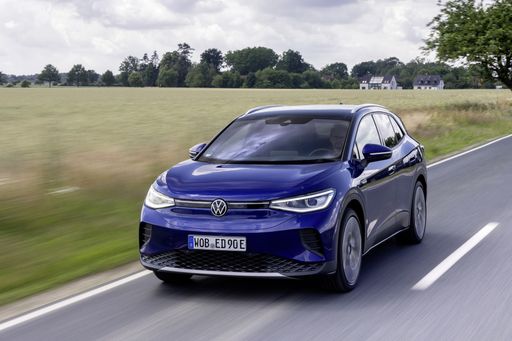 @ Volkswagen AG / VW Media
@ Volkswagen AG / VW Media
VW ID.4
CUPRA Tavascan
The CUPRA Tavascan represents a bold step forward in the realm of electric vehicles with its striking design and dynamic performance. As the marque's first all-electric SUV, it combines athletic aesthetics with a commitment to sustainability. Inside, the vehicle offers a sophisticated and connected driving experience, ensuring that technology and comfort go hand in hand.
details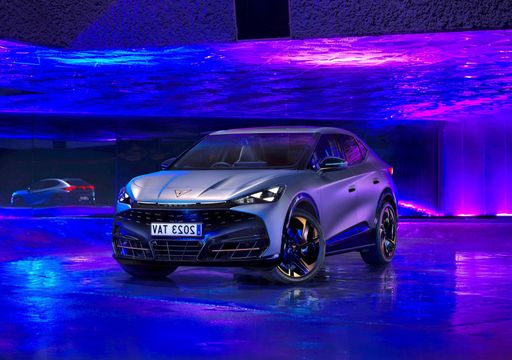 @ CUPRA / SEAT S.A.
@ CUPRA / SEAT S.A.
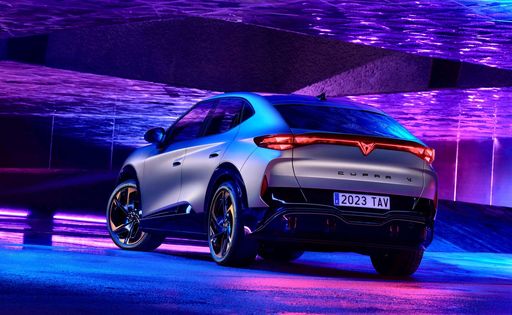 @ CUPRA / SEAT S.A.
@ CUPRA / SEAT S.A.
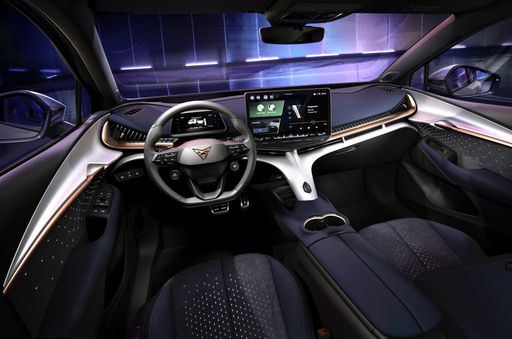 @ CUPRA / SEAT S.A.
@ CUPRA / SEAT S.A.
VW ID.4
The VW ID.4 is a calm, roomy electric SUV that turns everyday driving into a quietly confident experience, its practical packaging and smooth manners tailored perfectly for family life. Volkswagen's solid build and intuitive interior tech mean you get electric practicality without the sci‑fi theatrics, making the ID.4 a sensible, surprisingly likable choice for most buyers.
details @ Volkswagen AG / VW Media
@ Volkswagen AG / VW Media
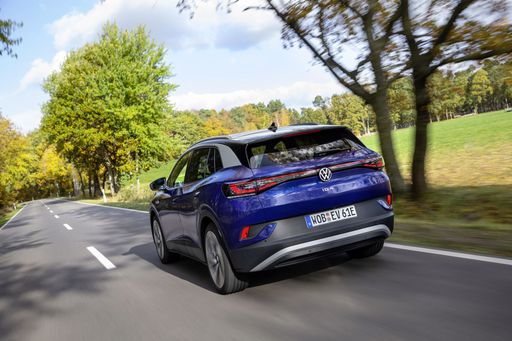 @ Volkswagen AG / VW Media
@ Volkswagen AG / VW Media
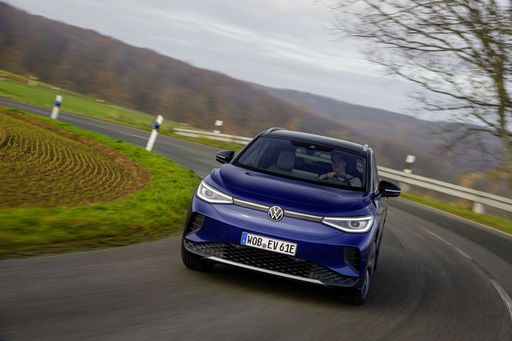 @ Volkswagen AG / VW Media
@ Volkswagen AG / VW Media
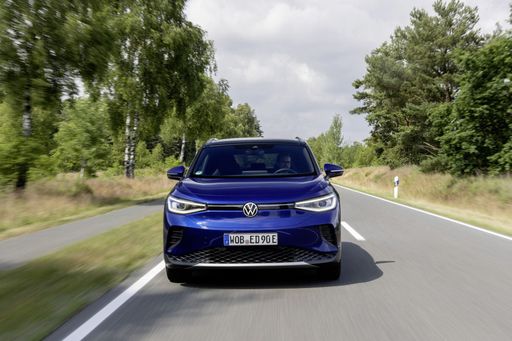 @ Volkswagen AG / VW Media
@ Volkswagen AG / VW Media
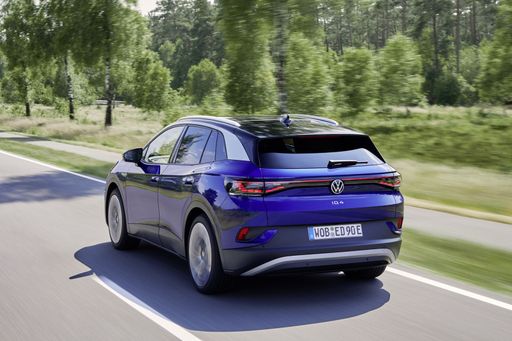 @ Volkswagen AG / VW Media
@ Volkswagen AG / VW Media
 @ Volkswagen AG / VW Media
@ Volkswagen AG / VW Media
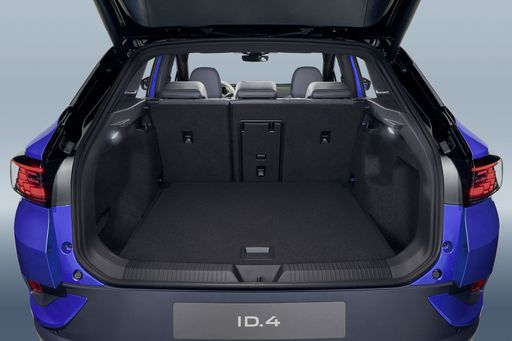 @ Volkswagen AG / VW Media
@ Volkswagen AG / VW Media
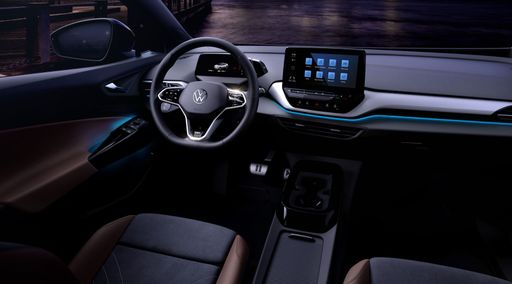 @ Volkswagen AG / VW Media
@ Volkswagen AG / VW Media
 @ CUPRA / SEAT S.A.
@ CUPRA / SEAT S.A.
|
 @ Volkswagen AG / VW Media
@ Volkswagen AG / VW Media
|
|
|
|
Costs and Consumption |
|
|---|---|
|
Price
45700 - 49600 £
|
Price
34600 - 47200 £
|
|
Consumption L/100km
-
|
Consumption L/100km
-
|
|
Consumption kWh/100km
15.9 - 17.1 kWh
|
Consumption kWh/100km
15.6 - 17 kWh
|
|
Electric Range
513 - 553 km
|
Electric Range
356 - 569 km
|
|
Battery Capacity
77 kWh
|
Battery Capacity
52 - 77 kWh
|
|
co2
0 g/km
|
co2
0 g/km
|
|
Fuel tank capacity
-
|
Fuel tank capacity
-
|
Dimensions and Body |
|
|---|---|
|
Body Type
SUV
|
Body Type
SUV
|
|
Seats
5
|
Seats
5
|
|
Doors
5
|
Doors
5
|
|
Curb weight
2178 - 2273 kg
|
Curb weight
1975 - 2248 kg
|
|
Trunk capacity
540 L
|
Trunk capacity
543 L
|
|
Length
4644 mm
|
Length
4582 - 4584 mm
|
|
Width
1861 mm
|
Width
1852 mm
|
|
Height
1597 mm
|
Height
1619 - 1634 mm
|
|
Max trunk capacity
-
|
Max trunk capacity
1575 L
|
|
Payload
507 - 522 kg
|
Payload
511 - 551 kg
|
Engine and Performance |
|
|---|---|
|
Engine Type
Electric
|
Engine Type
Electric
|
|
Transmission
Automatic
|
Transmission
Automatic
|
|
Transmission Detail
Reduction Gearbox
|
Transmission Detail
Reduction Gearbox
|
|
Drive Type
Rear-Wheel Drive, All-Wheel Drive
|
Drive Type
Rear-Wheel Drive, All-Wheel Drive
|
|
Power HP
286 - 340 HP
|
Power HP
170 - 340 HP
|
|
Acceleration 0-100km/h
5.5 - 6.8 s
|
Acceleration 0-100km/h
5.4 - 9 s
|
|
Max Speed
180 km/h
|
Max Speed
160 - 180 km/h
|
|
Torque
545 - 679 Nm
|
Torque
310 - 679 Nm
|
|
Number of Cylinders
-
|
Number of Cylinders
-
|
|
Power kW
210 - 250 kW
|
Power kW
125 - 250 kW
|
|
Engine capacity
-
|
Engine capacity
-
|
General |
|
|---|---|
|
Model Year
2024
|
Model Year
2023 - 2025
|
|
CO2 Efficiency Class
A
|
CO2 Efficiency Class
A
|
|
Brand
CUPRA
|
Brand
VW
|
What drivetrain options does the CUPRA Tavascan have?
Available configurations include Rear-Wheel Drive or All-Wheel Drive.
The prices and data displayed are estimates based on German list prices and may vary by country. This information is not legally binding.
